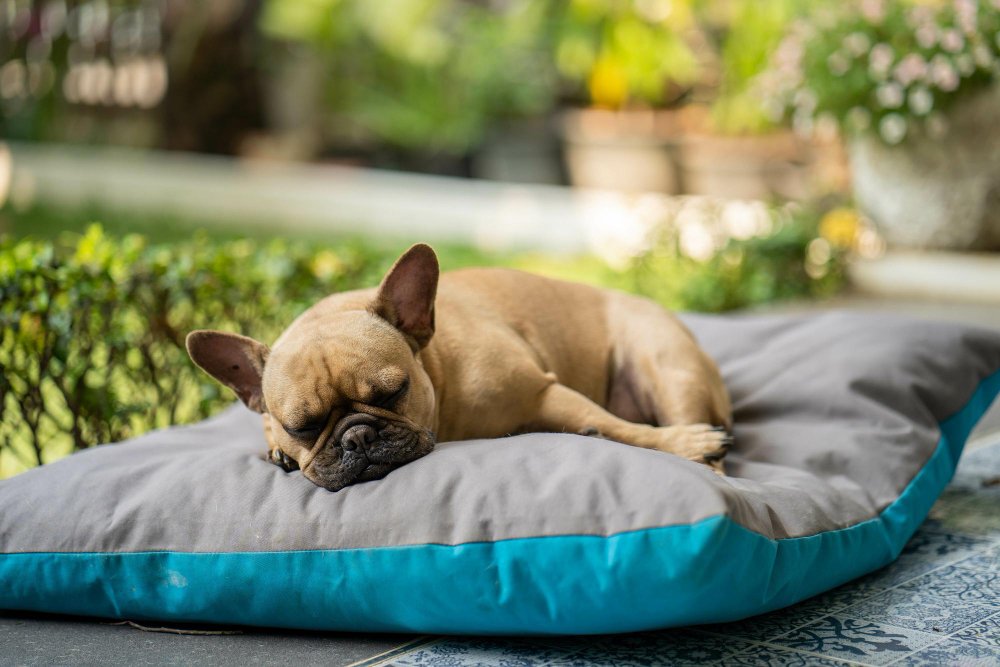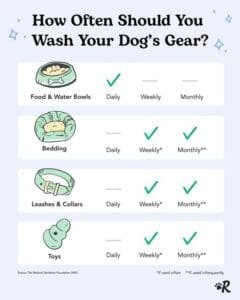Keeping your dog’s bed clean and odor-free supports hygiene, reduces bacteria buildup, and helps create a more comfortable sleeping space.
Keeping Your Dog’s Bed Clean And Odor-Free
Does your furry friend’s bed always seem to have a lingering odor, no matter how often you wash it? Well, fret no more, because we have some simple yet effective tips to keep your dog’s bed clean and odor-free. From regular washing techniques to using natural deodorizers, this article will provide you with all the knowledge you need to create a fresh and inviting sleeping space for your beloved pet. Say goodbye to those unpleasant smells and say hello to a cozy, fresh-smelling bed that your dog will love to snooze on!
Choosing the Right Dog Bed
When it comes to choosing the right dog bed, there are a few factors to consider. First and foremost, think about the material of the bed. Dogs have different preferences, so it’s important to assess what your furry friend might find most comfortable. Some popular options include memory foam, orthopedic foam, and cozy fleece. Take into account your dog’s size, weight, and any special needs they may have. Additionally, consider the durability and ease of cleaning of the material.
Another important consideration is the removable and washable covers. Dogs can be messy, so it’s essential to choose a bed with a cover that can be easily removed and washed. This will make cleaning a breeze and help keep your dog’s bed fresh and free of odors.
Speaking of size, selecting the appropriate size is crucial for your dog’s comfort. Measure your dog’s length from nose to tail, as well as their height when lying down, to determine the ideal bed size. Your dog should be able to stretch out comfortably without hanging off the edge or feeling cramped. A properly sized bed will promote better sleep and overall well-being.
Lastly, take your dog’s sleeping habits into account. Some dogs like to curl up in a cozy spot, while others prefer to sprawl out. If your dog tends to nest or burrow, consider a bed with raised sides or a hooded design. On the other hand, if your dog enjoys stretching out, a flat or open-design bed may be more suitable. By considering your dog’s sleeping habits, you can ensure they have a bed that meets their specific needs.
Regular Cleaning Routine
Maintaining a regular cleaning routine for your dog’s bed is essential to keep it clean and odor-free. Here are some steps you can follow:
First, vacuum the bed regularly to remove any loose fur, dirt, or debris. This will help prevent a buildup of allergens and keep the bed fresh and clean. Use an upholstery attachment to thoroughly clean all sides of the bed, including the corners and crevices.
Next, if you notice any stains on the bed, spot clean them promptly. Use a gentle pet-friendly stain remover or a mixture of water and mild detergent. Gently blot the stain with a clean cloth or sponge, being careful not to rub as it may further set the stain.
Washing the bed according to the manufacturer’s instructions is crucial for maintaining its cleanliness and integrity. Most beds with removable covers can be machine-washed on a gentle cycle with cold water. Use a pet-safe detergent and avoid using bleach or harsh chemicals. If the bed doesn’t have a removable cover, spot clean the surface and consider using a pet-friendly fabric refresher to keep it smelling fresh.
Dealing with Odors
Odors can build up over time, making your dog’s bed less inviting. Fortunately, there are several methods you can use to combat unpleasant smells and keep the bed fresh:
Using odor-neutralizing sprays specifically designed for pet beds can help eliminate unwanted smells. Simply spray the bed after cleaning or whenever a fresh scent is desired. Be sure to choose a spray that is safe for pets and avoid spraying directly on your dog.
Baking soda is also an effective and natural way to neutralize odors. Sprinkle a generous amount of baking soda on the bed, focusing on areas that may be particularly smelly. Let it sit for a couple of hours or overnight, then vacuum the bed thoroughly to remove the baking soda.
Enzymatic cleaners are another option for tackling tough odors. These cleaners break down organic matter and eliminate odors at the source. Follow the instructions on the product and treat any soiled areas on the bed. Be sure to choose an enzymatic cleaner that is safe for pets.
If you prefer a natural deodorizing option, consider essential oils. Certain essential oils, such as lavender or lemon, have natural deodorizing properties. Dilute a few drops of essential oil in water and lightly spray the bed. However, it’s important to use essential oils sparingly and ensure they are safe for dogs, as some oils can be toxic to pets.
Preventing Fleas and Ticks
Fleas and ticks can pose a threat to your dog’s health and comfort. By taking preventative measures, you can reduce the risk of infestation and keep your dog’s bed free of these pests.
Regularly check your dog for fleas and ticks, especially after outdoor activities or walks in wooded areas. Promptly remove any ticks you find using tweezers. If you notice signs of fleas, such as excessive scratching or small black specks on your dog’s fur, consult your veterinarian for appropriate flea treatment.
Washing the bed with hot water is an effective way to kill fleas and their eggs. Set your washing machine to the highest temperature recommended for the bed’s material and wash it thoroughly. Be sure to use a pet-safe detergent and run an extra rinse cycle to remove any traces of detergent that may cause skin irritation.
Using flea and tick repellents can provide an additional layer of protection for your dog’s bed. Look for pet-safe sprays, powders, or spot-on treatments that are specifically formulated to repel fleas and ticks. Follow the instructions carefully and apply the repellent as directed, focusing on areas where pests are likely to hide.
For a natural solution, consider using diatomaceous earth. This powdery substance is made from fossilized algae and is safe for pets and humans but lethal to fleas and ticks. Sprinkle diatomaceous earth on the bed and let it sit for a few hours or overnight. Vacuum the bed thoroughly to remove the powder, along with any deceased pests.
Protecting the Bed
Protecting the bed from accidents, spills, and general wear and tear will help extend its lifespan and keep it in pristine condition.
Using a waterproof liner or cover is an excellent way to safeguard the bed against accidents and spills. These liners create a protective barrier between the bed and any liquids, ensuring that the bed stays dry and clean. Choose a liner or cover that is easy to remove and clean, ideally one that is machine washable.
Training your dog to stay off the bed when dirty can help prevent excessive mess and dirt buildup. Teach your dog a command, such as “off” or “bed,” to gently guide them away from the bed when they are dirty or wet. Provide alternative resting spots, such as a designated dog bed or a comfy blanket, that your dog can use when they need a break from the main bed.
Drying the Bed Properly
Properly drying the bed is crucial to prevent mold, mildew, and unpleasant odors. Follow these tips to ensure your dog’s bed dries thoroughly:
After washing or spot cleaning the bed, allow it to air dry completely before using it. Hang the bed outside or in a well-ventilated area to promote faster drying. Avoid placing the wet bed in direct sunlight, as it may cause fading or damage to certain materials.
If the bed’s care instructions allow for machine drying, use a low-heat setting and remove the bed promptly when it’s dry. High heat can shrink or damage certain materials, so it’s important to follow the manufacturer’s guidelines. Ensure the bed is completely dry before returning it to your dog’s sleeping area to prevent any moisture-related issues.
Addressing Specific Bed Types
Different types of dog beds require specific care and maintenance. Here are some tips for cleaning and maintaining different bed types:
Foam or memory foam beds: Foam beds can be vacuumed regularly to remove loose fur and debris. Spot clean any stains promptly and consider using a mattress protector to prevent liquids from seeping into the foam. If the bed has a removable cover, follow the manufacturer’s instructions for washing. In some cases, the foam itself may need to be spot cleaned or professionally cleaned.
Orthopedic beds: These beds are designed to provide extra support and comfort for dogs with joint or muscle issues. Follow the cleaning instructions provided by the manufacturer, as some orthopedic beds may require special care. Regular vacuuming and spot cleaning are recommended, along with proper drying to prevent the growth of mold or mildew.
Heated or electric beds: Carefully read and follow the manufacturer’s instructions for cleaning and maintaining heated or electric beds. In many cases, these beds cannot be submerged in water or machine washed. Spot clean the surface as needed and ensure all electrical components are properly insulated and protected.
Elevated or cot-style beds: These beds often have a metal or plastic frame with a fabric surface. Remove the fabric portion and wash it according to the care instructions. The frame can be wiped down with a pet-safe disinfectant or a mixture of water and mild detergent. Ensure the fabric and frame are completely dry before reassembling the bed.
Frequency of Cleaning
Establishing a regular cleaning schedule for your dog’s bed is important to maintain cleanliness and prevent odors. Consider the following factors when determining how often to clean the bed:
Take into account your dog’s characteristics and habits. Dogs that shed heavily or are prone to accidents may require more frequent cleaning. Additionally, if your dog spends a lot of time outdoors or has a tendency to roll in dirt, their bed may need more regular cleaning.
Consider any allergies or sensitivities that your dog may have. Some dogs are more sensitive to dust, pollen, or certain cleaning products. If your dog shows signs of allergies or skin irritations, it may be necessary to clean their bed more frequently to minimize exposure to potential allergens.
Adjust the cleaning frequency as needed. If you notice persistent odors, stains, or signs of infestation, it’s recommended to increase the frequency of cleaning. On the other hand, if your dog’s bed remains relatively clean and odor-free, you can space out the cleanings accordingly.
Additional Tips for Freshness
In addition to regular cleaning and maintenance, there are a few additional tips you can follow to keep your dog’s bed fresh:
Wash your dog regularly to minimize dirt and odor transfer to their bed. Use a gentle dog shampoo and ensure the coat is thoroughly rinsed to remove any residue that may cause skin irritation. A clean dog will help keep their sleeping area cleaner as well.
Keep the sleeping area well-ventilated to prevent musty smells and mold growth. If the bed is placed in a confined space, consider using a fan or opening a window to promote air circulation. Fresh air flow will help reduce moisture and prevent odors from lingering.
Avoid allowing your dog on the bed when they are wet or dirty. Wet fur and mud can quickly soil the bed and create an unpleasant odor. Keep a towel handy near the entrance or use a doormat to wipe your dog’s paws before they climb onto the bed.
Consider using pet-friendly fabric fresheners to keep the bed smelling clean and inviting. Look for natural, non-toxic options that are specifically formulated for pet beds. Avoid using strong artificial fragrances that may be overwhelming or irritating to your dog’s sensitive nose.
Signs Your Dog’s Bed Needs Replacement
No matter how well you care for your dog’s bed, there will come a time when it needs to be replaced. Here are some signs that indicate it’s time for a new bed:
Noticeable wear and tear: Over time, beds can become worn out, with tearing or fraying fabric, loose stitching, or flattened cushions. If you notice any significant damage to the bed that compromises its comfort or safety, it’s time for a replacement.
Loss of shape or support: Beds that have lost their shape or support can no longer provide the necessary comfort for your dog. If the bed sags in the middle, no longer bounces back, or doesn’t provide adequate cushioning, it’s time to find a new bed that will better support your dog’s body.
Persistent odors despite cleaning: If you’ve followed proper cleaning and odor elimination techniques but the bed still smells unpleasant, it may be due to deep-seated odors or deterioration of the material. A bed that retains odors even after thorough cleaning should be replaced to ensure your dog has a fresh and sanitary sleeping area.
Allergic reactions or skin irritations: If your dog exhibits signs of allergies, such as constant itching, redness, or rashes that seem to be triggered by the bed, it’s possible that the materials or detergents used in the bed are causing a reaction. In such cases, it’s best to replace the bed with a hypoallergenic option to alleviate your dog’s discomfort.
By keeping these signs in mind and regularly assessing your dog’s bed, you can ensure that they have a comfortable and clean sleeping space. Remember, a clean and odor-free bed not only promotes your dog’s well-being but also enhances the overall hygiene and ambiance of your home. So, take the time to choose the right bed, establish a cleaning routine, and follow these tips for freshness. Your dog will thank you for providing them with a cozy and inviting place to rest and sleep!


